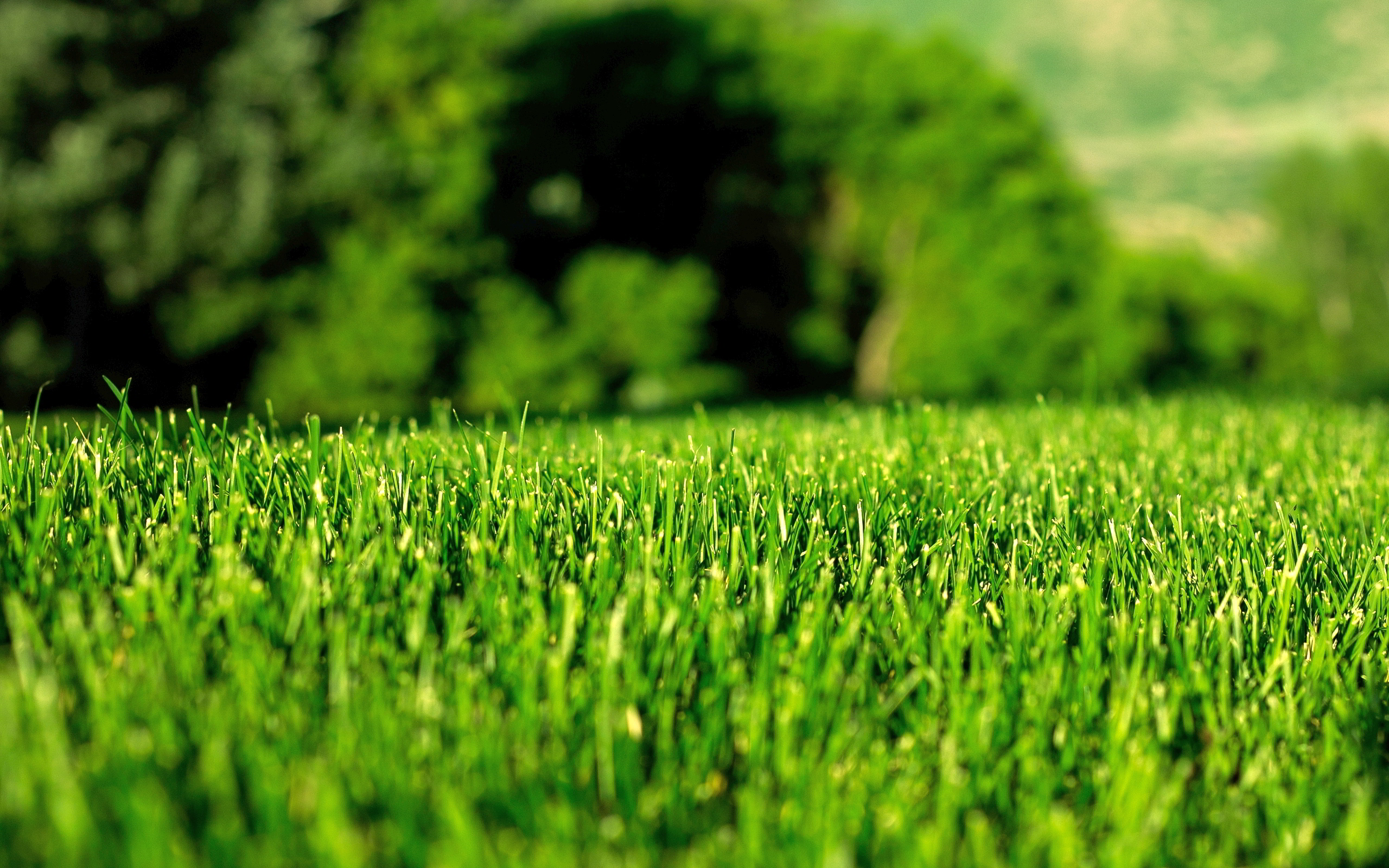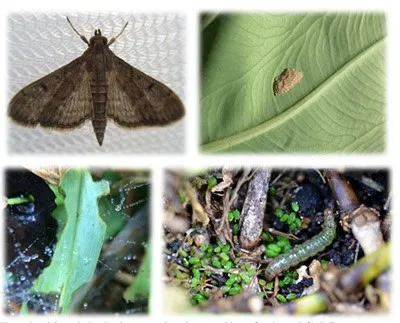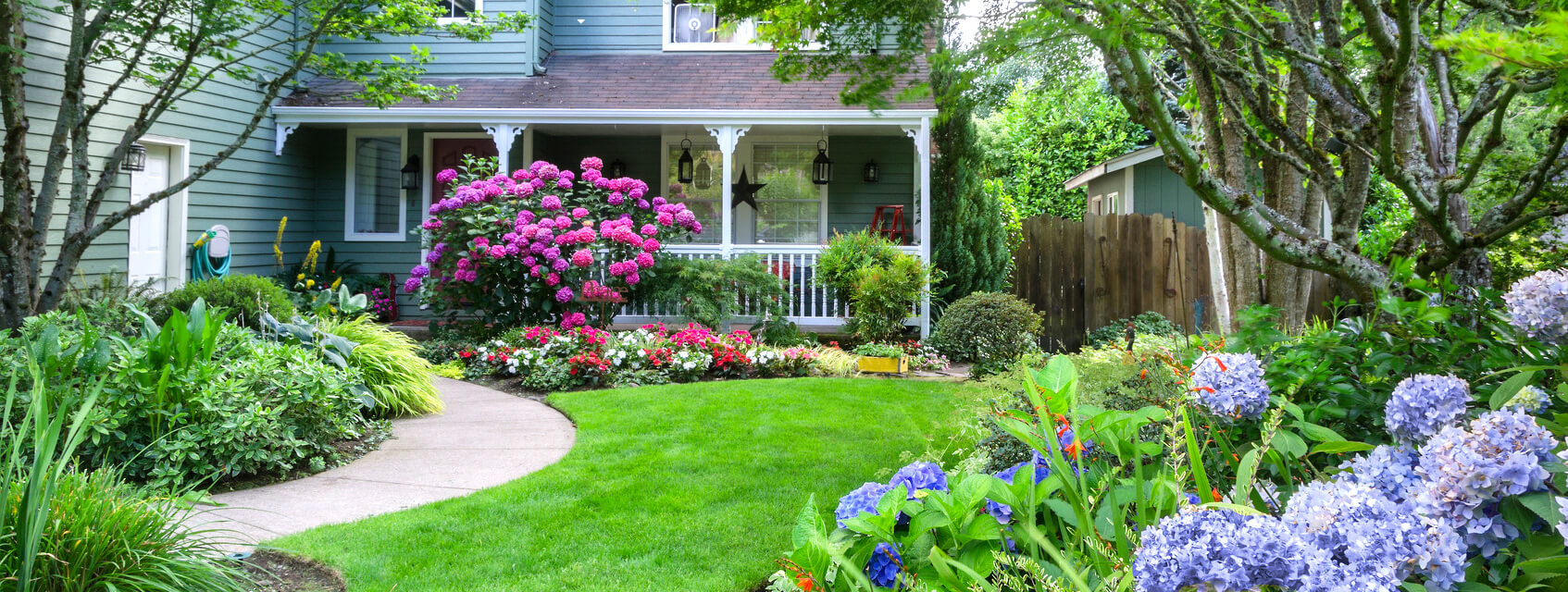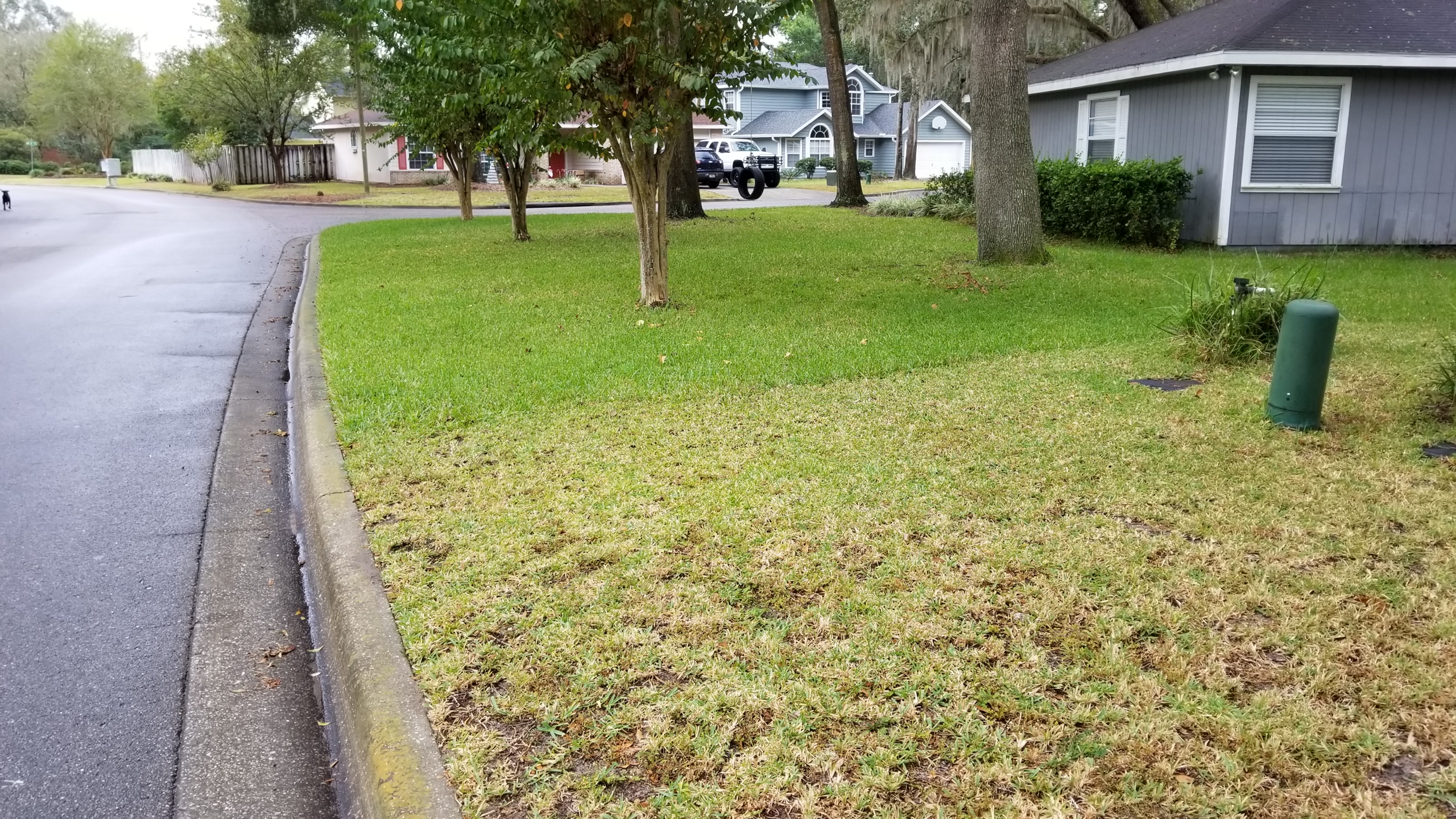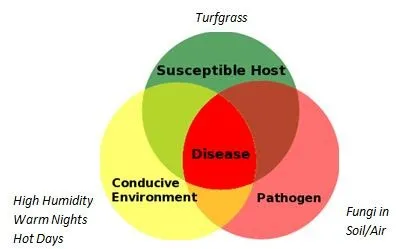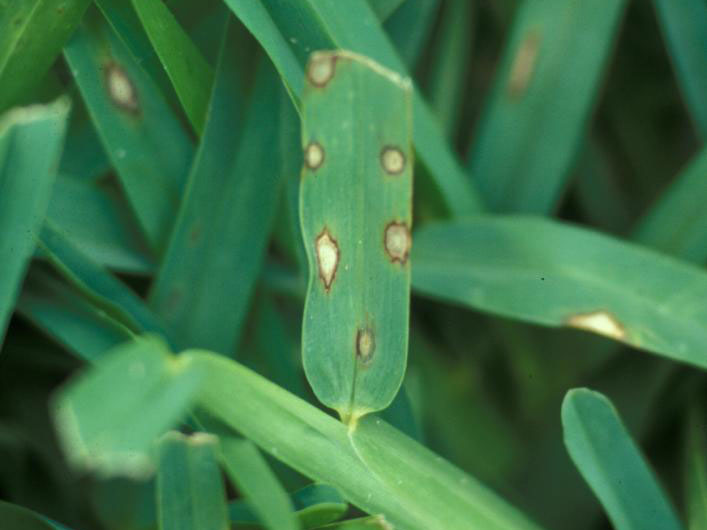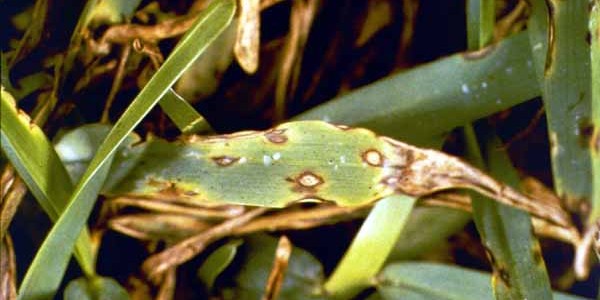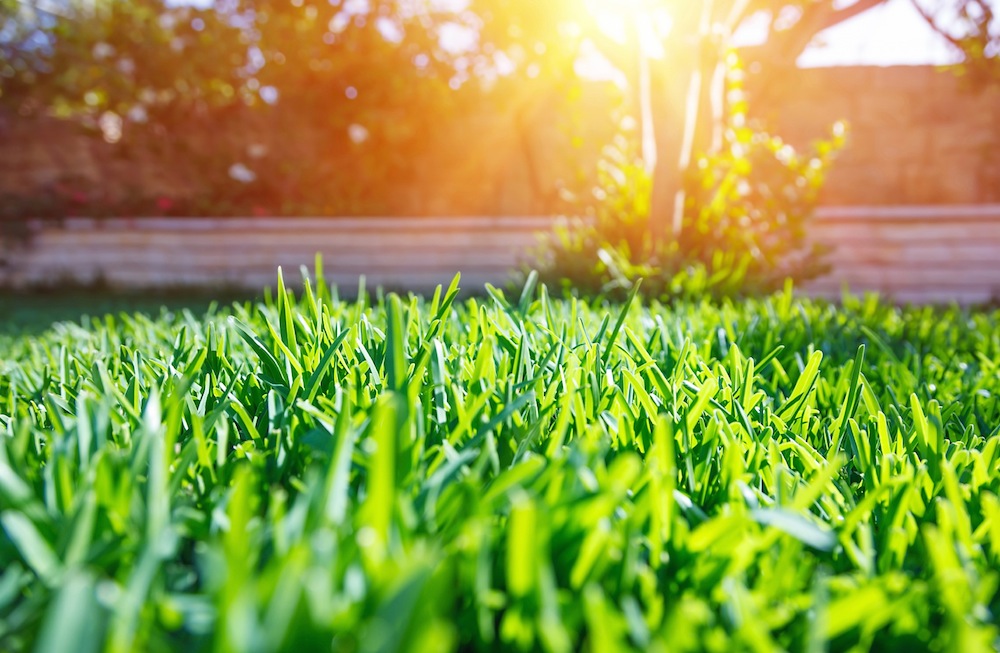Timing is critical when it comes to Gainesville lawn weed control. The mistake most homeowners make is to wait too late to treat winter weeds. If you plan to use a pre-emergent herbicide in your lawn to control weeds, you need to apply the product during October when nighttime temperatures drop to 55° to 60° for several consecutive nights. This is when their seeds need to be protected from germination.
At Santa Fe College, where this video was taken, we did our first pre-emergent weed control application in October but these weeds popping up were tubulars leftover from the year before that had to be treated with a post-emergent weed killer.
Most winter weeds are annuals. Common winter annual weeds include annual bluegrass (Poa annua), chickweed, henbit, hop clover, lawn burweed, and wild geranium.
These and other winter annual weeds germinate from seeds during fall as the soil temperature cools and the day length shortens. The seedlings usually go unnoticed but continue to slowly grow through the colder winter months. Approaching spring, as the day length becomes longer and the soil temperature warms, these previously inconspicuous weeds put on a growth spurt.
During February and March, the winter annual weeds become very noticeable in our Gainesville turfgrass. They quickly begin producing many flowers followed by thousands of tiny seeds. By late spring or early summer with the onset of higher air temperatures, the parent plants die. But they’ve left behind multitudes of seeds. These will last the hot summer months dormant in your lawn awaiting the cooler temperatures of autumn to begin the next generation. This is the cycle of life for these winter weeds.
Treating them with a combination of pre and post emergent lawn weed controls at the right time is key to your success.
If you have a history of problems with winter weeds in your lawn, attempt control measures before the weeds go to seed. If you intend to use a preemergence herbicide, apply it during October, just before the winter weeds germinate. Then you'll only have to do clean up on a lot less tubular weeds that come back up.
If you need help with Gainesville lawn weed treatments and fertilizer programs, give our team a call or text at (352) 378-5296. We're local and have been serving Gainesville for over 15 years. We look forward to working with you!

